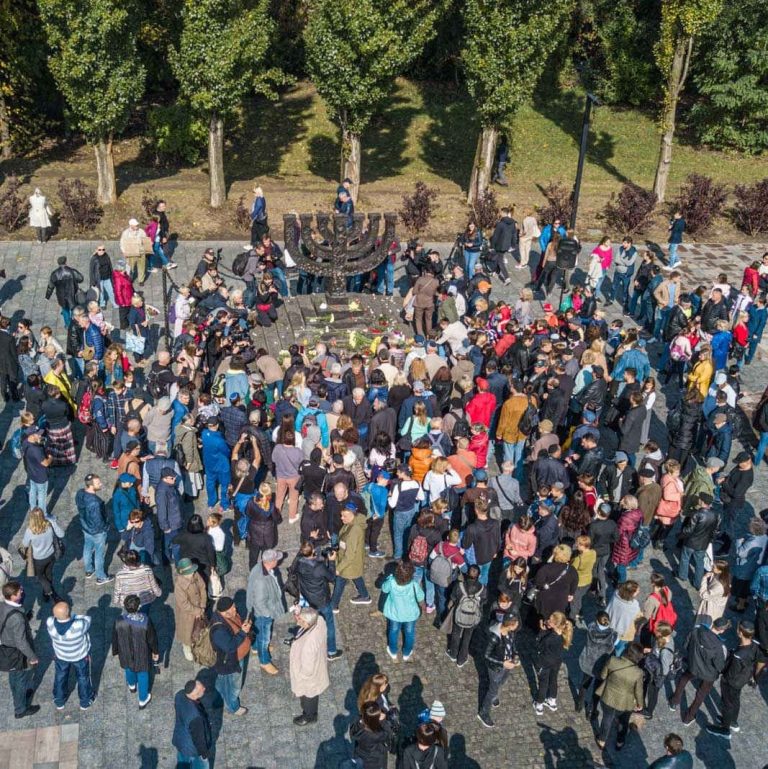The Jewish is one of the oldest communities living in Ukraine. The vast majority of Ukrainian Jews are descendants of one of the largest sub-ethnicities of the Jewish people, the Ashkenazi. Now, there are approximately 300,000 Jewish in Ukraine, according to the Association of Jewish Organizations and Communities of Ukraine.
numbers
300,000 Jewish in Ukraine, according to the Association of Jewish Organizations and Communities of Ukraine.Jewish Holocaust and mass executions during World War II in Kyiv’s Babyn Yar and throughout Ukraine have taken the lives of more than half of Ukrainian Jewry. The descendants of the survivors were forcibly assimilated by the Soviet authorities. The full restoration of the community and the gradual reconstruction of the synagogues (there were more than 800 of them in Ukraine), have begun after the collapse of the Soviet Union.
Each year, in September and October, there are a number of traditional holidays connected with the New Year according to the Hebrew Calendar.
The Month of Jewish Holidays
Rosh Hashanah (“The Head of the Year” in Hebrew) is a New Year’s Eve celebration according to Jewish tradition. It is celebrated in September-October, on the first and second days of the Tishrei month. Tishrei is always a full month and lasts for 30 days. According to the Hebrew calendar, 2019 is the year 5780. It was celebrated this year from September 29th to October 1st.
On this day, according to Jewish beliefs, God created the first man, Adam. Then Adam and Eve broke the bow and were expelled from Eden. It is believed that it is these days when God decides the fate of all life on earth for the coming year. Anyone who professes Judaism traditionally has 10 days left to repent before the Day of Judgment.
In Rosh Hashanah, the congregation or family gathers together to pray, and, when the first star rises, announcing the coming of the new year, everyone meets at the festive table and greets each other, “Shana toba u metooka” meaning means “Have a good and sweet year!” in Hebrew. On this holiday, khala (round bread with raisins) is traditional food, symbolizing the circle of life, as well as pomegranate, because according to legend, it has 613 bones – the same as the commandments in Judaism. The festive table usually contains honey, dates and apples — to make the next year sweet, and vegetables — to make the year fruitful. Moreover, on this day they eat fish, and together with the head — to always stay “in the lead, not in the tail” of events.
Tishrei
The first month in Jewish civil calendar and the seventh month in the religious calendar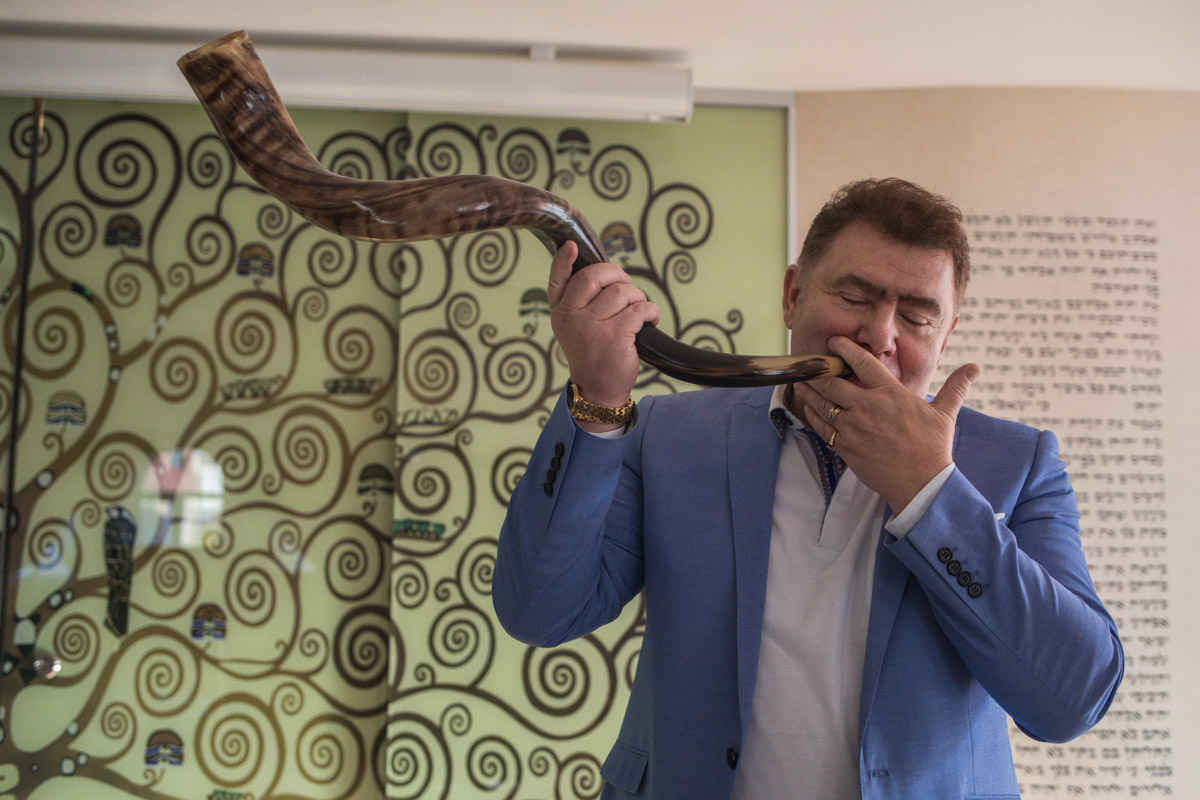
On Rosh Hashanah, there is also a tradition to play the shofar, a Jewish ritual musical instrument made of the ram’s horn, after reading Torah.
Therefore, this day is also called the Day of Trumpet Sounds. The sounds of the shofar remind the Jews that God’s judgment will begin soon, calling to review their behavior over the past year.
The next stage comes 10 days after Rosh Hashanah and is called Yom Kippur, that is the Judgment Day. On this day, all Jews (even those who rarely attend the synagogue) are obliged to fast and pray until three stars appear in the sky.
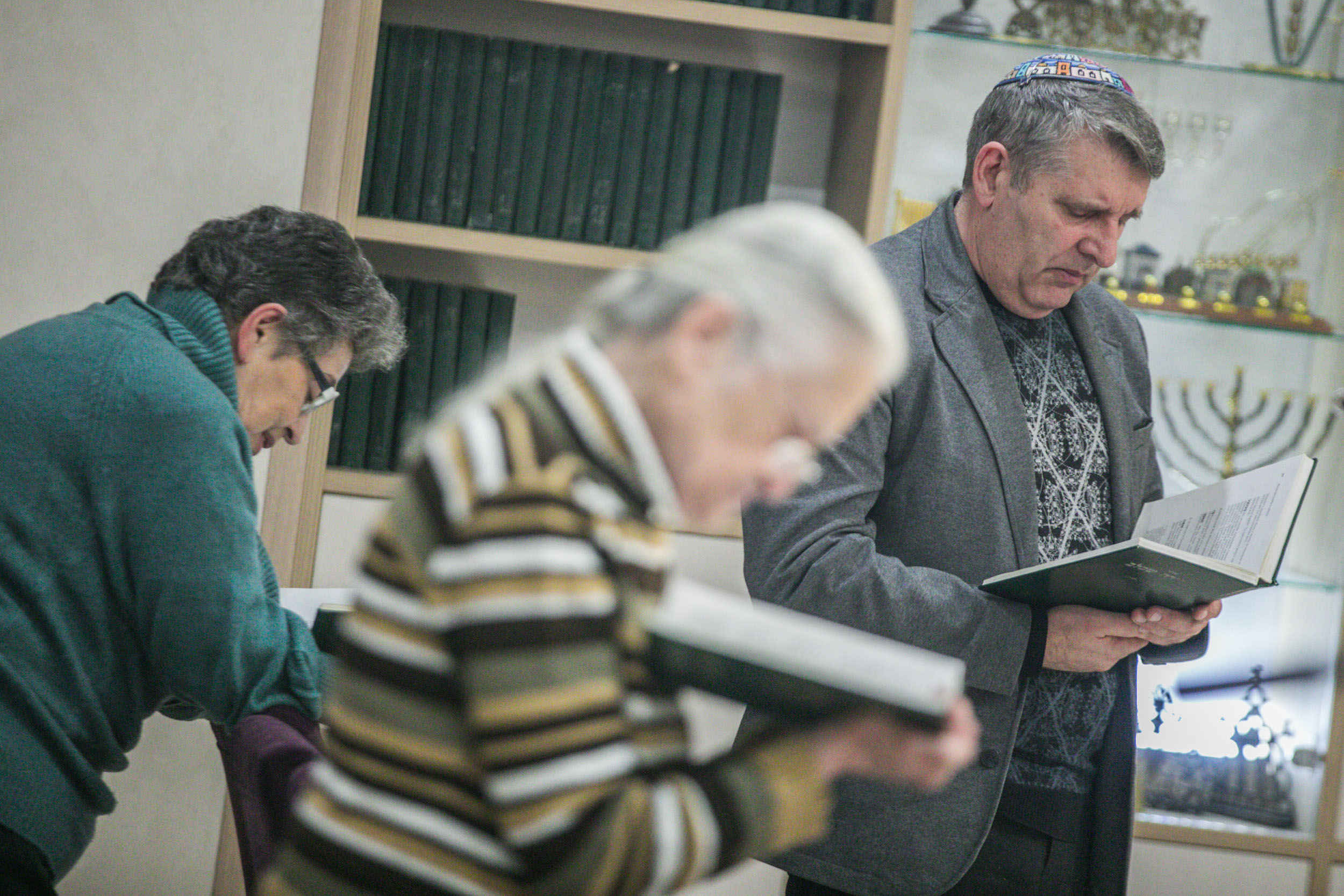
10 days after Yom Kippur, the Sukkot holiday comes and lasts for a week. The word “Sukkot” is the plural form of the Hebrew word “suka” which means “smoking.” Suká reminds the Jews of the hovels, in which the ancient Israelites roamed the wilderness for 40 years after leaving Egypt. Before the holiday, the Jews build the hovels, whose roofs are usually covered with straw, but they must have holes through which the sky is visible. People spend time in them, learning the Torah, discussing it, or just meeting friends there. According to tradition, every Jew should have at least one meal in a suka. In Israel, the construction of such hovels during the time of Sukkot is a very common tradition.
It is interesting that in Ukrainian culture, the whole period of autumn holidays, or even in spring, for example, before Easter, when it rains and gets colder, is commonly called “Jewish bitches”.
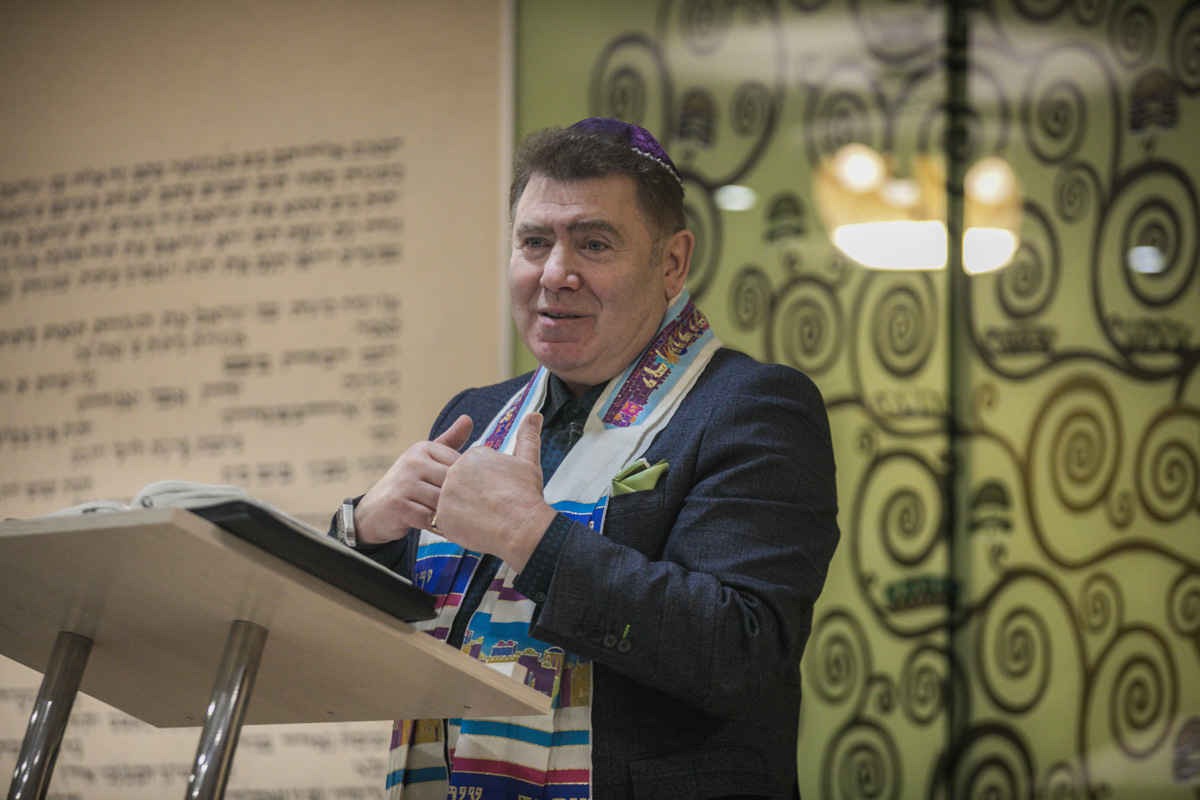
Shabbat. Oleksandr Duhovnii
In a number of Jewish traditional holidays, the weekly Shabbat holiday holds a special place. It begins at sunset on Friday and ends at sunset and appearing of the first star on Saturday. In total, the Jewish year includes 52 Sabbaths.
For over 20 years, Oleksandr Duhovnii has been the chief rabbi of the communities of progressive Judaism in Kyiv and Ukraine. The rabbi shares his memories of Shabbat from his own childhood:
— When I was little, my mother always told me that you could not work on Saturday. And I really liked it. I never worked: I went to school, then to the university. Mother always said, “We must have fun on Saturday.” At that time, I didn’t understand what my mother meant.
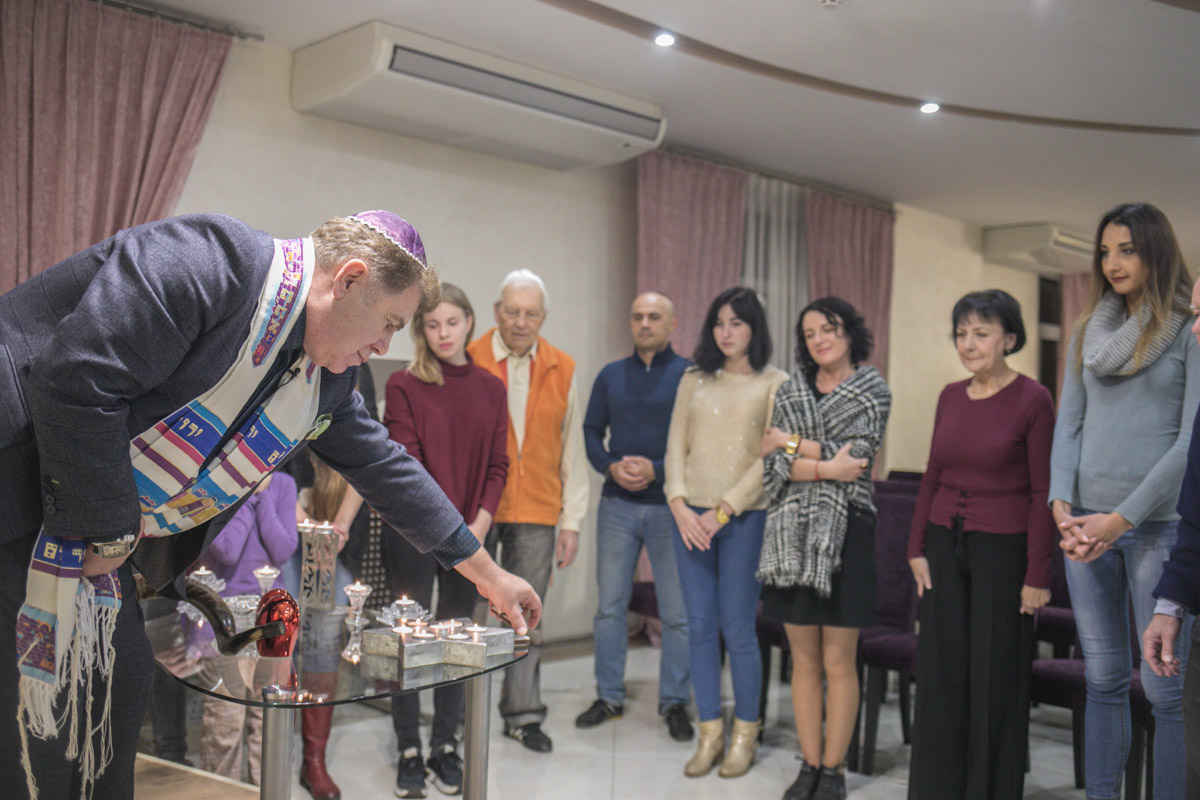
Oleksandr grew up in a religious family, and since his childhood he followed the tradition of Shabbat celebrations:
— Mother did not work on Shabbat. My father did all the housework. He always told my mother, “If you have nothing to do, go to the synagogue.” And since my childhood for some reason I thought that “synagogue” is not a very kind word. But then I realized that the synagogue is a home where people come to meet God and see each other.
Duhovnii explains what the Shabbat is:
— Shabbat means taking a break from creative work. So did God, who worked for six days, and took a rest on the seventh day (the Jewish week begins from Sunday, not Monday, so the Sabbath is the last, seventh day of the week.)
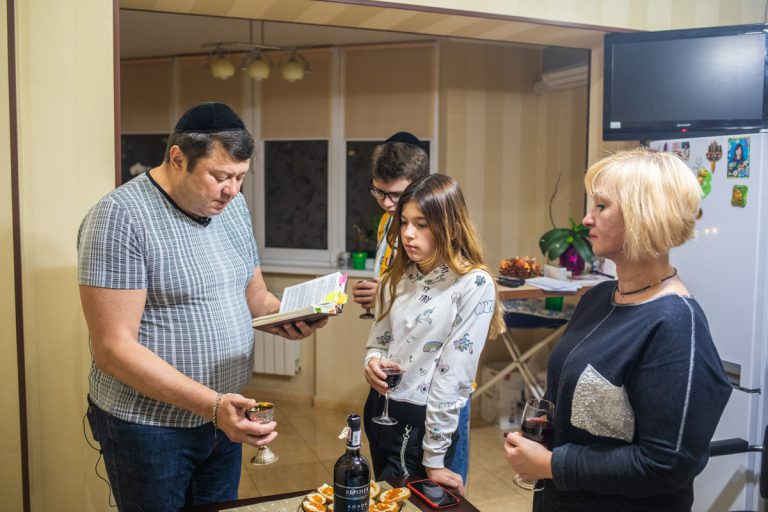
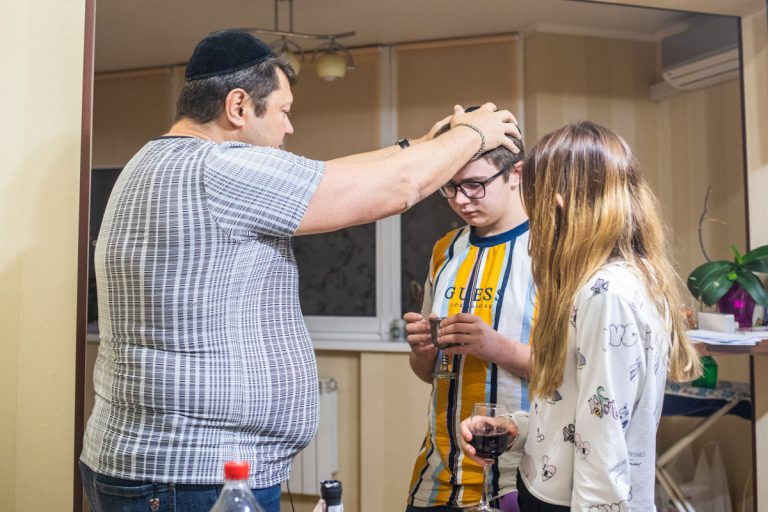
slideshow
Shabbat is traditionally celebrated at home or in the synagogue. In the evening, they light at least two candles, put them on a table covered with a tablecloth, pour a glass of wine, lay out two halas (bread) covered with napkins, and they perform the rite of consecration of the festive table — kiddush, chanting the prayers, written in siddur, the prayer book.
According to orthodox tradition, there are 39 types of work that is prohibited from doing on Shabbat. For example, you are not allowed to build, sow, plow, write, ignite, and put out a fire, etc. But not all modern Jews adhere strictly to these prohibitions: it all depends the community you belong to.
The main religion of the Jewish people — Judaism — is divided into three branches-confessions: orthodox, conservative and progressive (reformist), which, in turn, are divided into a number of sub-confessional lines.
For example, one of the areas of Orthodox Judaism, created in contrast to the ultra-Orthodox canons of Judaism, is Hasidism, which originated in Ukraine in the early eighteenth century and was spread throughout Eastern Europe. The Hasidic communities emerged mainly in small towns and spread thanks to the followers of Baal Shem Tov. Today, Orthodox communities are quantitatively dominant in Ukraine, while reformists and conservatives communities are dominant in Central and Western Europe and the United States.
Reformist, progressive, or liberal trends emerged in the mid-nineteenth century in Germany and during the XIX-XX centuries spread throughout Central and Western Europe. In Ukraine, the first reformist community, according to Oleksandr Duhovnii, was the Ternopil Community, founded in 1798.
The main idea of the reformists, says Oleksandr, is that the Jewish tradition is constantly evolving and, with every new generation, gets enriched with new meanings. Therefore, according to the reformers, ethical commandments should be kept, and rituals can be reformed according to the needs of the present:
— In Ukraine, you will be surprised, there is even a female rabbi. A rabbi is a teacher of spirituality.
Hasidism
Rabbi and healer Baal Shem Tov (Israeli bin Eliezer) is considered to be the founder of Hasidism.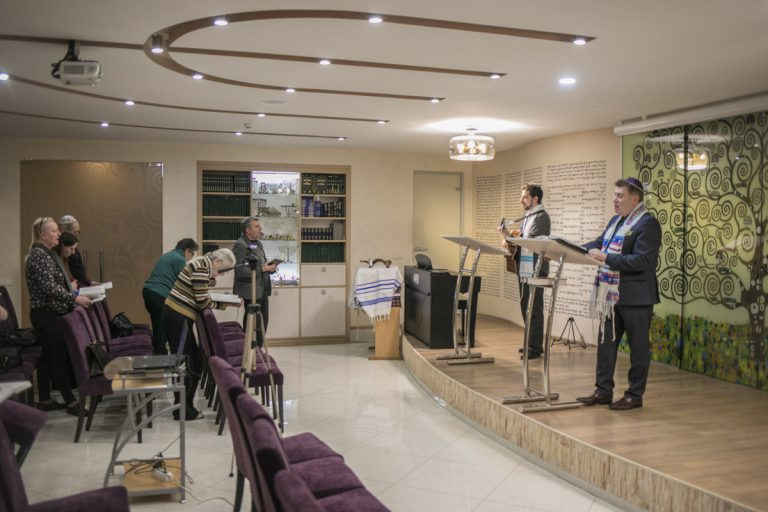
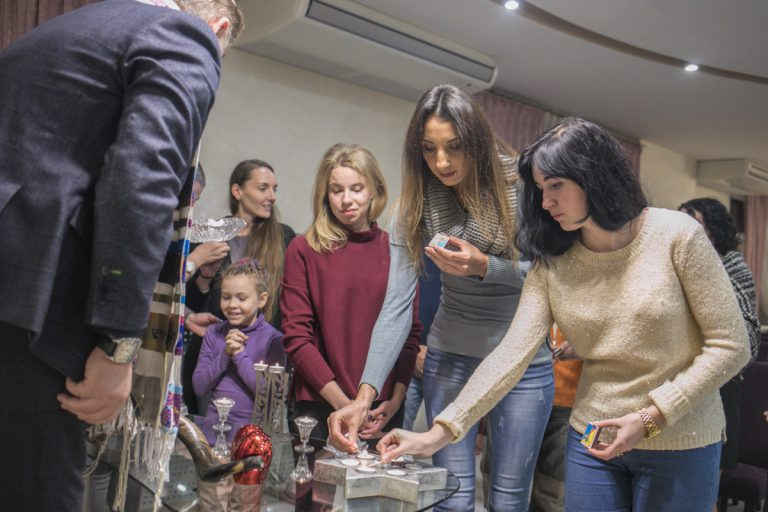
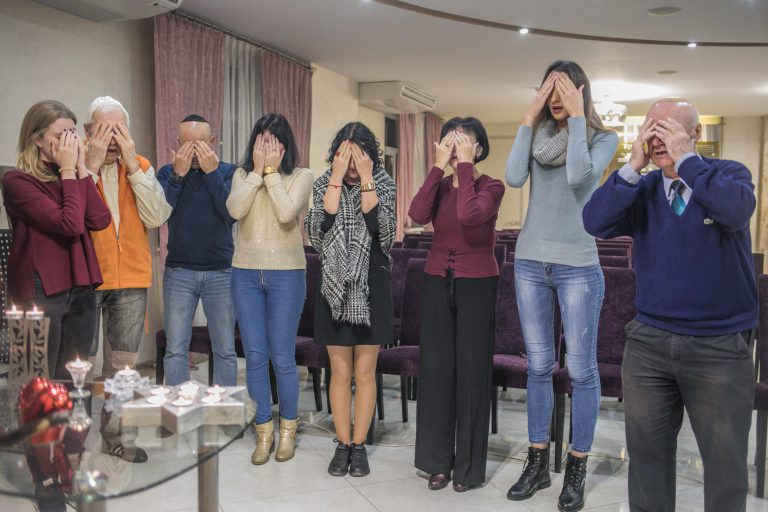
slideshow
According to tradition, a Jew is considered to be a person who was born of a Jewish mother or who embraced Judaism. Comparing Judaism to Christianity, which is more common to Ukrainians, Oleksandr Duhovnii speaks about the main differences between these religions:
— Christianity claims to be a triune god, and Judaism clearly states that there can be only one god.
Oleksandr Duhovnii became a rabbi, continuing the spiritual tradition of his mother’s family, whose father was also a rabbi during World War II:
— My grandfather was the last rabbi in the town of Ruzhin. He was killed several months after Ruzhyn was released. And I am the first rabbi, a citizen of Ukraine, who studied abroad in London, and came back here. I could not even imagine that I would ever be a rabbi. But now I can.
— It seems to me that everything that was in my life was like a shelling, preparing me to where I am now. And when they ask me, “How is your job?” — I always say that I enjoy it.
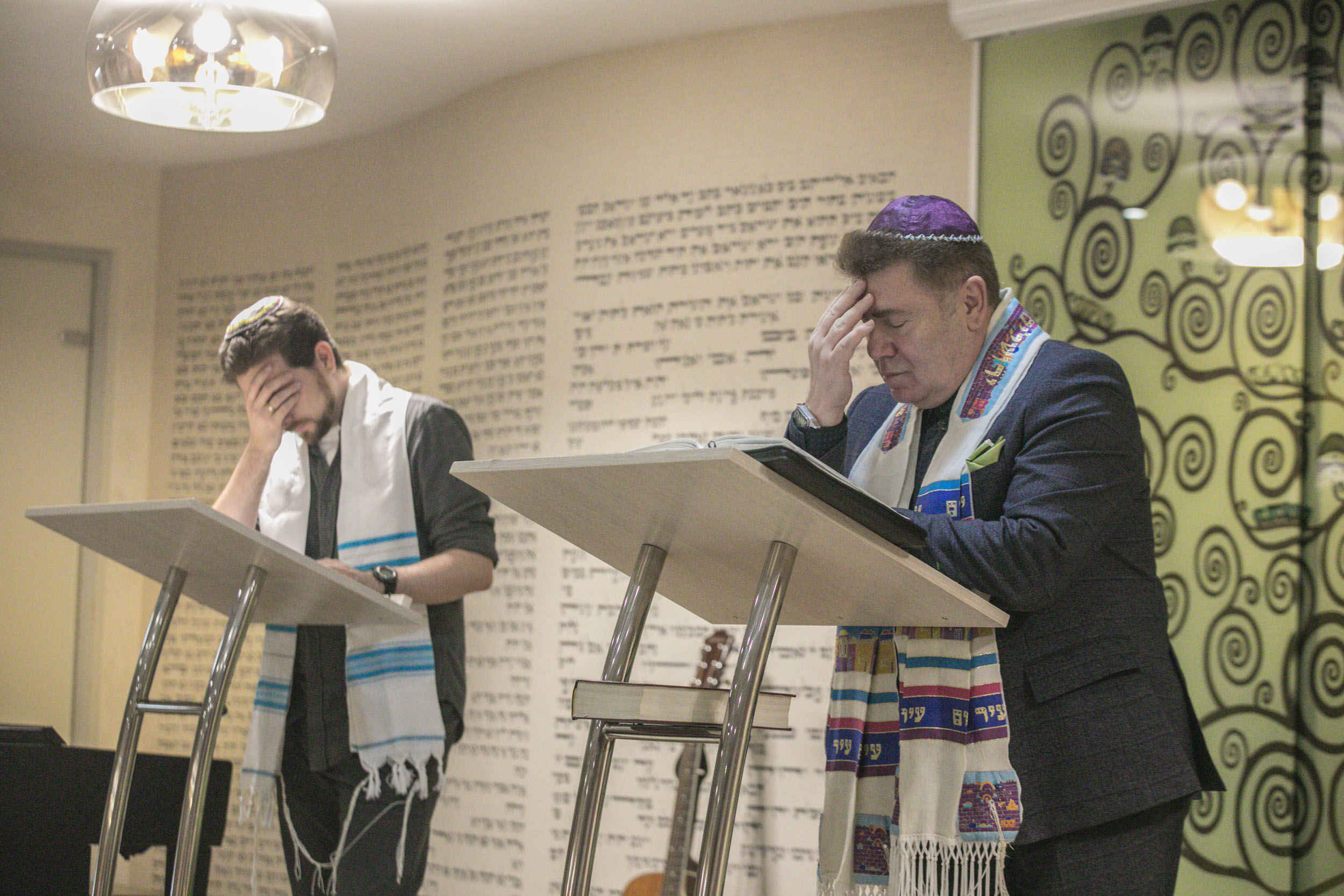
In July 1942, Oleksandr’s mother, her younger sister, brother and their mother were shot dead along with other Jews:
— My mother said to her mom, “Mom, I so want to live!” And then her mother said, “I will sacrifice my life for you to God.” My mother said she couldn’t believe at the time that someone was ready to die for her.
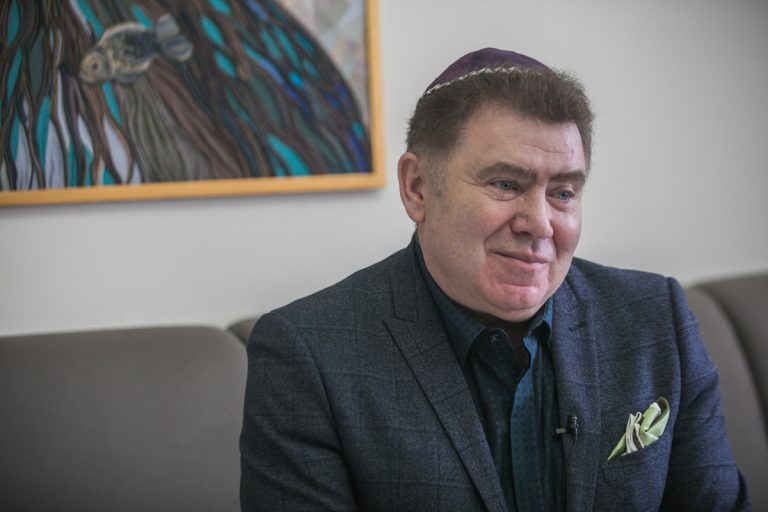
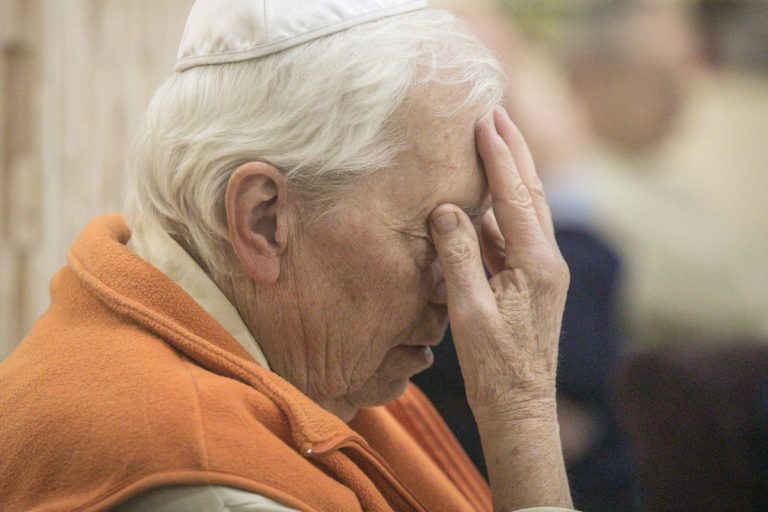
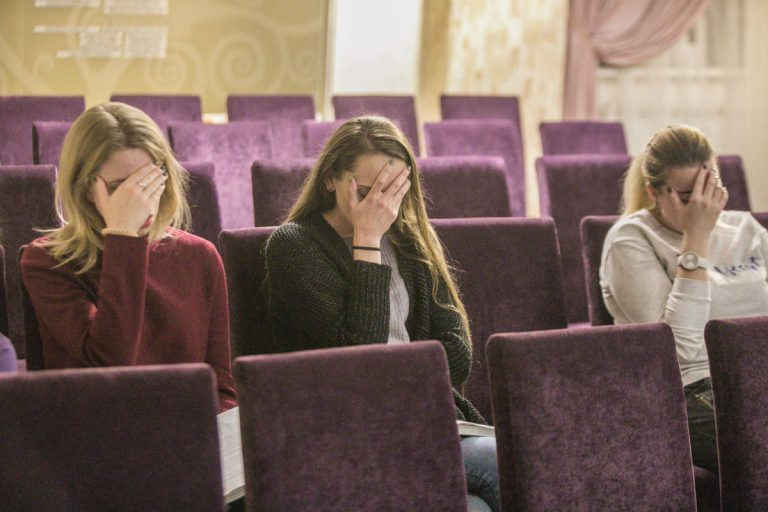
slideshow
So, Oleksandr says that his mother Fania and her younger sister Bronia escaped because they fell into a pit and laid there until the shootings were over. The girls were noticed by local resident Agafia Volynets. She sheltered the sisters until she was threatened with punishment for harboring Jews. Then Agafia advised the girls to go to Zhmerynka. It was rumored that Jews were not murdered there but forced to work:
— I asked how they went to Zhmerynka because people could find out that they were Jewish and turn them in. And my mom says, “No, they didn’t recognize us.” I ask, “How?” He says: “We pretended to be Ukrainians because we knew Ukrainian. Language saved our lives. ”
— For me, Ukraine is the first Motherland. The first and the last. I still have a historical homeland. But Ukraine is my land. I studied in London and could stay there because my wife worked there, but it was very important for me to turn back to Ukraine.
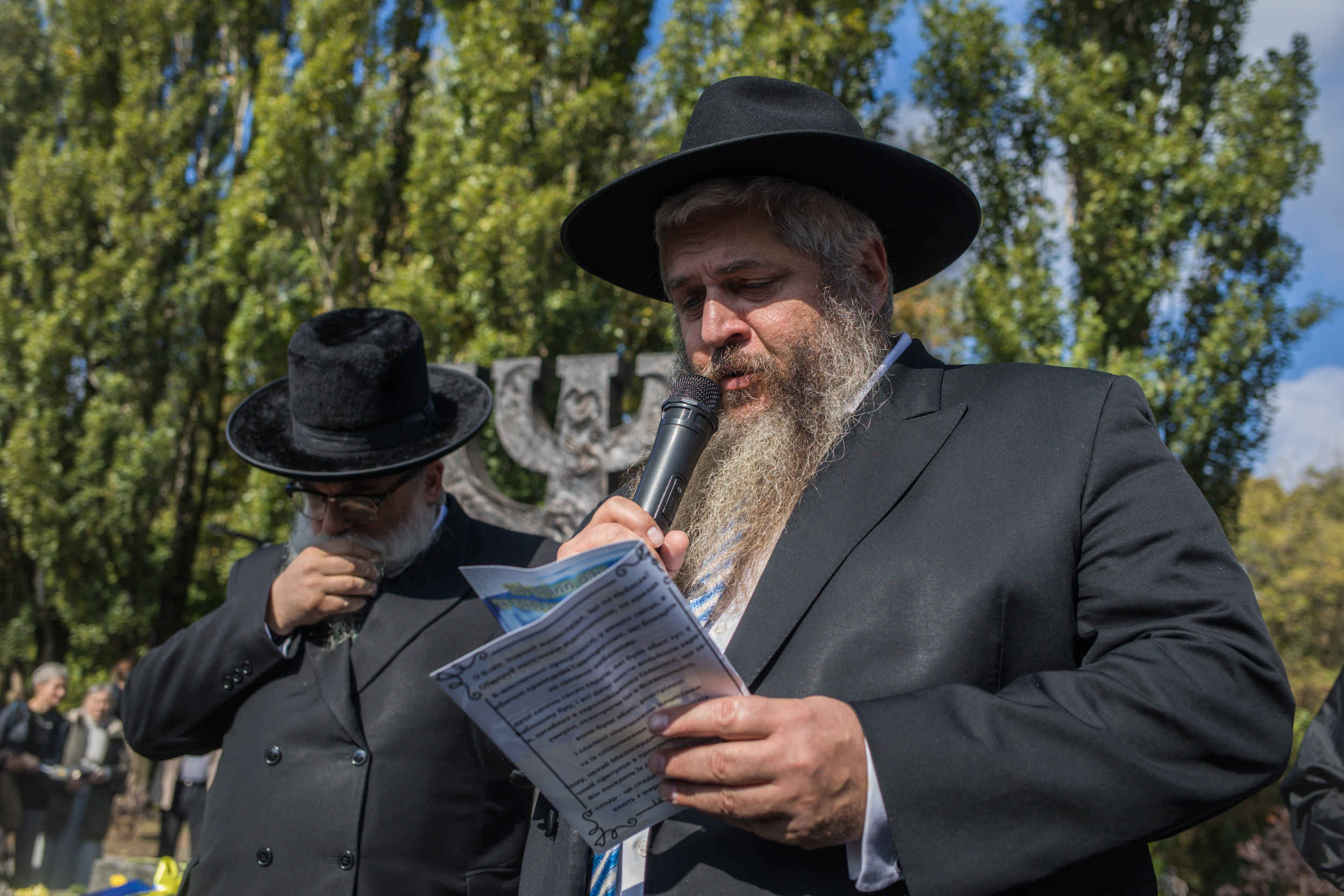
Jews in Ukraine
Ukrainian historical sources say that Jewish communities emerged in Ukraine as early as the first century. Their community increased significantly during the period of Kyiv Rus at the expense of displaced persons from Byzantine and Khazar Khaganate.
Mass migration of Ashkenazi Jews in Ukraine and Poland began after the adoption of the Union of Lublin in 1569. Thus, at the beginning of the seventeenth century, there were already 120,000 Jews in Ukrainian lands.
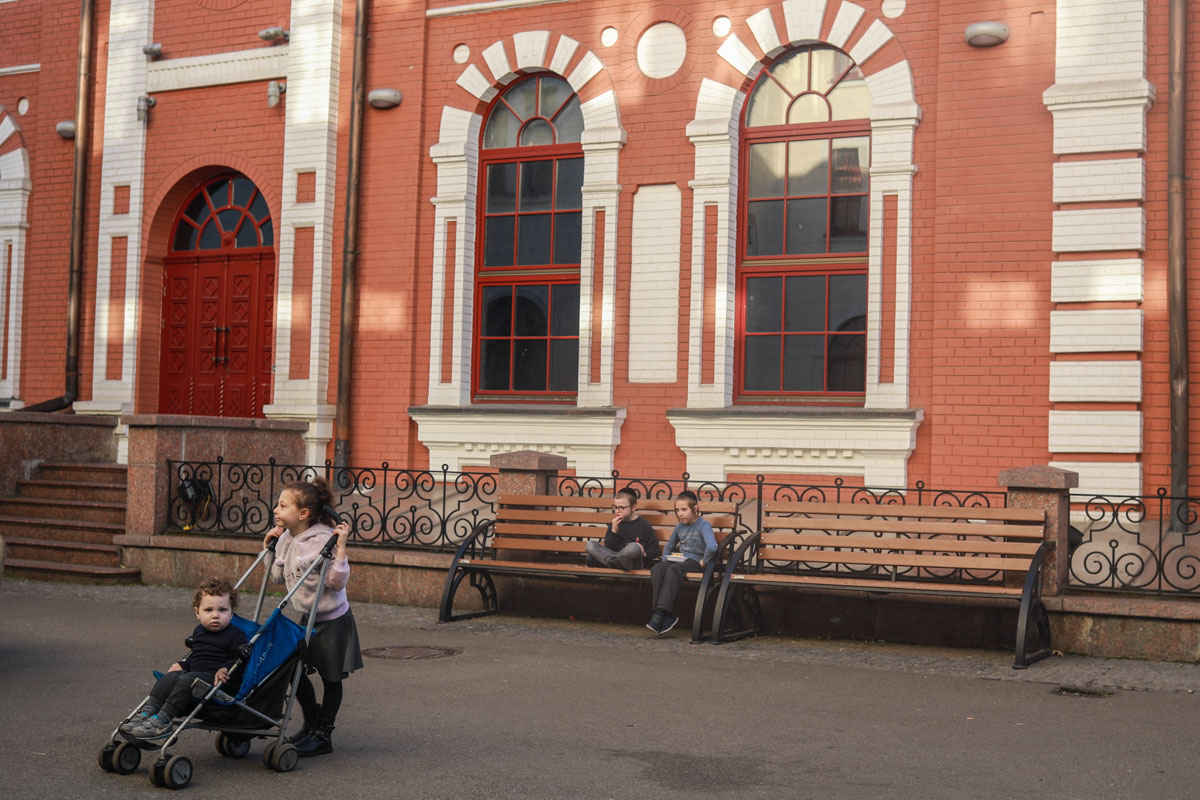
In the XVIII century, after three divisions of Poland, the governments of the Russian Empire and Austria decided to significantly restrict the right of Jews to free residence in the imperial territories. Therefore, at the behest of Empress Katerina II, burghers and merchants (since Jews were then credited only to these categories of population) were forbidden to settle outside certain cities. It was how the so-called “Jewish Settlement Strip” emerged, which included the towns of Podillia, Bessarabia, Polissia, parts of the Naddniprianshchyna, Poltavshchyna and Volyn regions.
Jews engaged in industry, agriculture, commerce, were in the civil service, or worked as lawyers, doctors, etc.
The 1926 census showed that more than 1.5 million Jews were living in Ukraine at that time.
Some cities, such as Odesa, Kyiv, are called Jewish because of the fact that there were numerous Jewish communities. Large Jewish communities were at different times in Lviv, Chernivtsi, Kolomiia, Ivano-Frankivsk, Uzhhorod, and Mukachevo.

Throughout their history, Jews have been united in communities. The synagogues were the center of union (in Hebrew — beit knesset — the house of knowledge). The synagogue always fulfills three main functions: the house of study, the house of prayer and the house of assembly.
Recently, there were approximately 800 synagogues in Ukraine, but now there are only 70 of them, and their gradual reconstruction is ongoing based on the efforts individual local communities or patrons.
There are approximately 260 Jewish religious communities in Ukraine today, most of them are Orthodox.
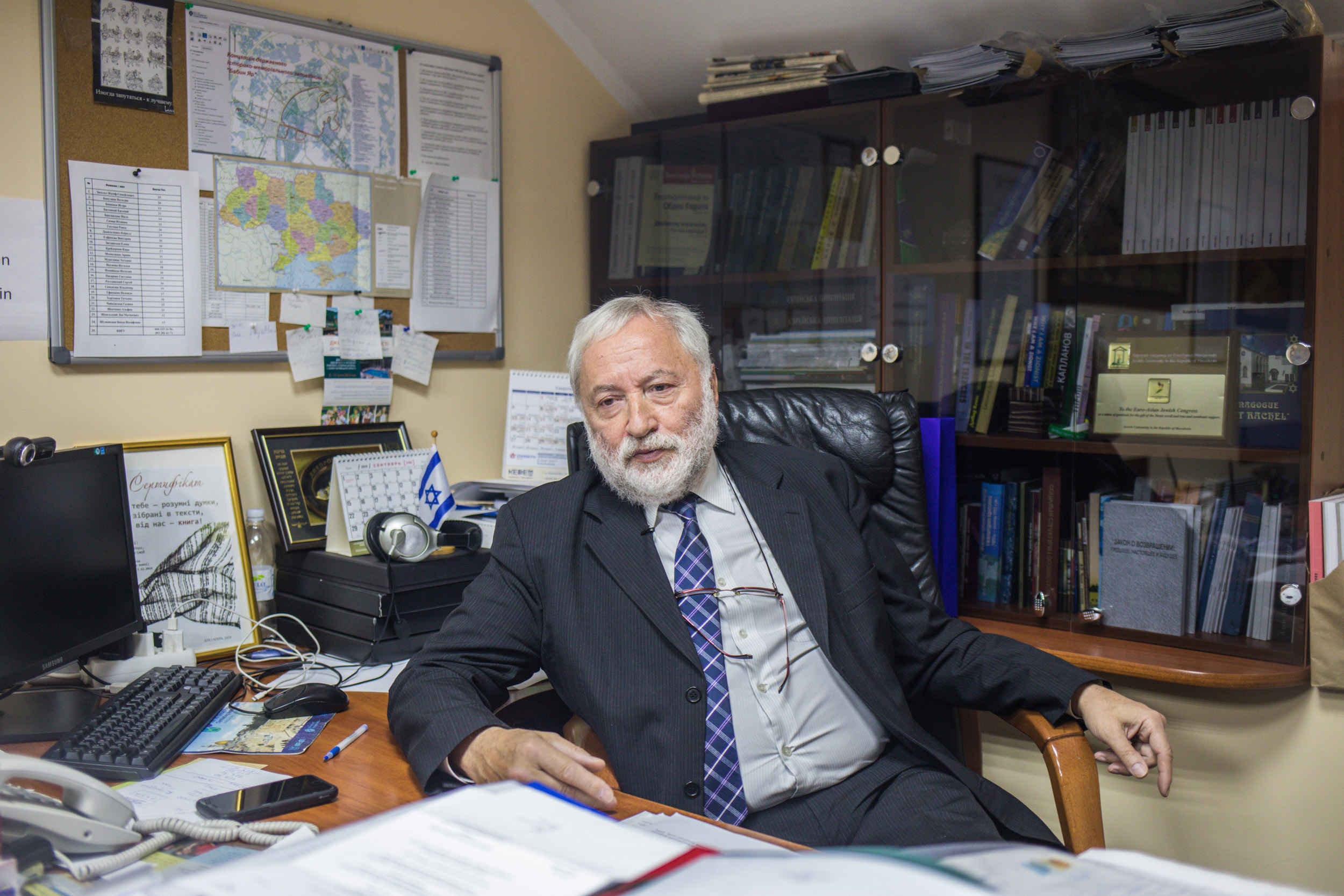
Public activism. Joseph Zisel’s
There are also a number of Jewish non-governmental organizations concerned with cultural issues, youth development, veterans support and more.
The first Jewish non-governmental organization in Ukraine was the Chernivtsi Jewish Civic and Cultural Foundation, which was established in 1988 by community activist, dissident, and former political prisoner Joseph Zisel’s.
Subsequently, in 1991, Joseph and like-minded people formed the Association of Jewish Organizations and Communities of Ukraine. Today it is one of the most active Jewish associations in Ukraine:
— There are about 15 different associations that bring together Jewish NGOs. Ours is the biggest one. The Association of Jewish Organizations and Communities includes nearly three hundred organizations of different types. There are religious, non-religious, youth, veterans — all of then. But we are the only association that includes all religious branches: reformist, conservative, and orthodox.
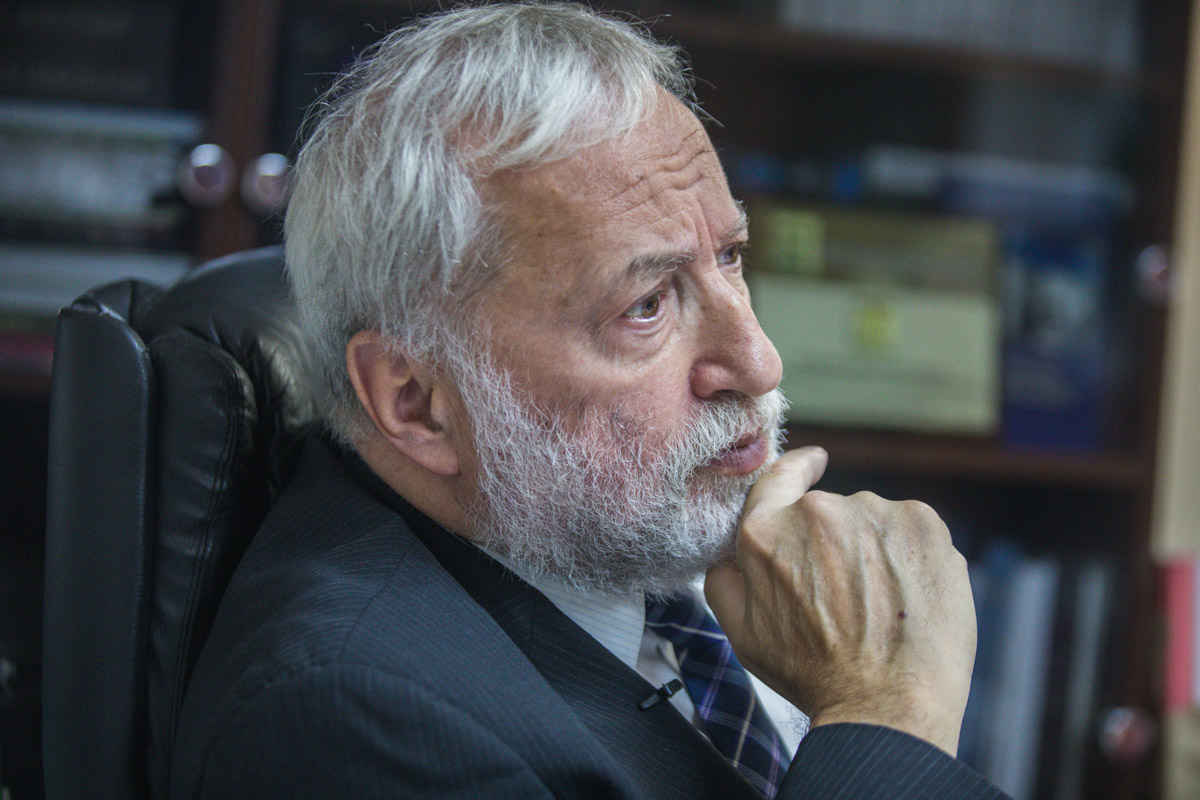
In 1989, Joseph was among the founders of the People’s Movement of Ukraine and was a member of its council together with Vyacheslav Bryukhovetsky, the founder of the Kyiv-Mohyla Academy. It was at the initiative of Joseph Sissels that the Academy began teaching jewish study, as in many universities of the world.
The Center for the Study of the History and Culture of Eastern European Jewry was also established at the Academy. The initiative to create a center and a number of other Jewish civic and educational organizations emerged instinctively, says Joseph:
— You feel this impulse: there is something you can do. Historically, Jews, wherever they live (and today they live in 100 countries), somehow arrange their lives everywhere, build their institutions. It is already included in this collective instinct.
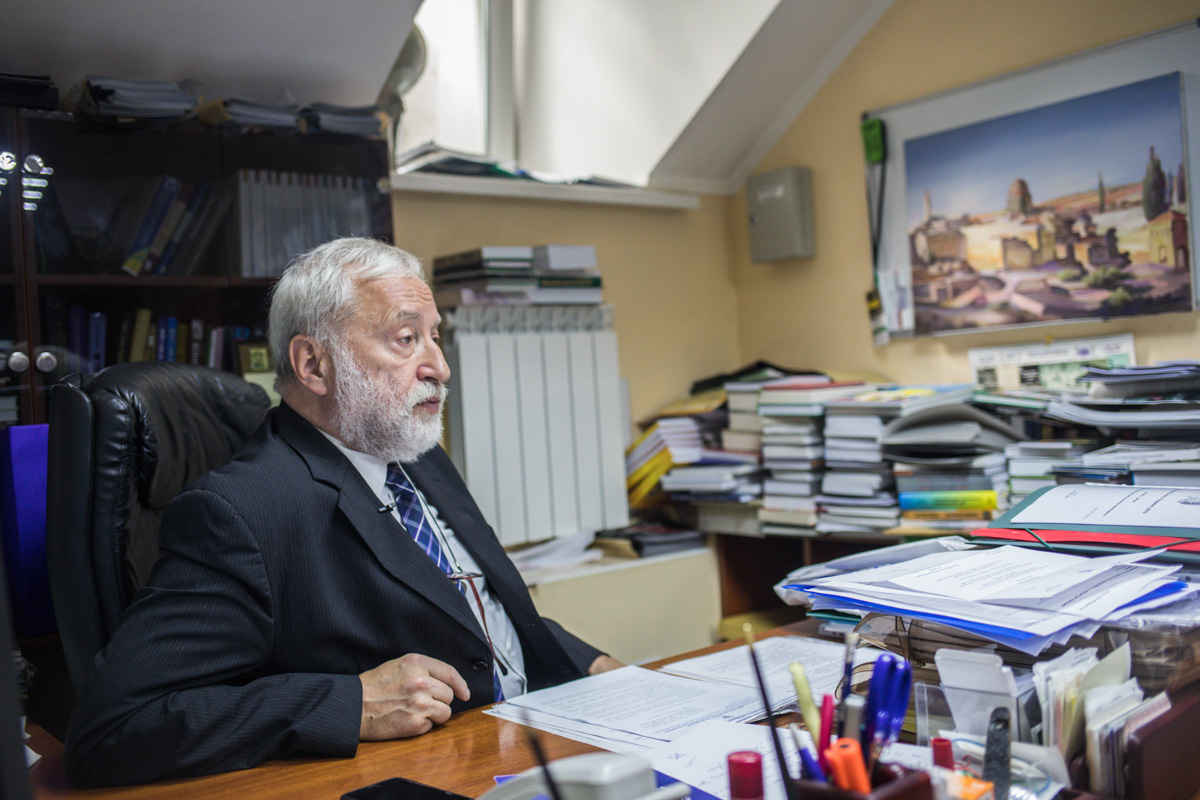
Joseph Zisel’s never doubted his own identity:
— I am a Jew, and my parents were Jews, so were my grandparents. And the first elements of such Jewish identity I received from my father when I was little. My father took me to the synagogue when I was 7 years old. I remember that.
He was born in Chernivtsi, where the Jewish community has always been massive:
— Chernivtsi is a very Jewish city. There were up to 70 percent of the Jewish population before the war. Well, I didn’t live then, before the war, but in the 50’s I remember, half of the city was Jewish. It was one of the most Jewish cities in Ukraine. So the atmosphere, the environment has also come to light later.
For his activity and active anti-Soviet stance, Zisel’s was twice sentenced to imprisonment. After spending more than 10 years in Soviet prisons, after the collapse of the USSR, Joseph began to actively build up a Jewish community in Ukraine:
— It was such a transition to another way of life, because then (in Soviet times — ed.) It was necessary to fight and destroy what was before us, and when it (Soviet Union — ed.) collapsed — it was necessary to start building something new. And what should we build? Something you know. Something that is more familiar to you. Something that you have sentiment for.
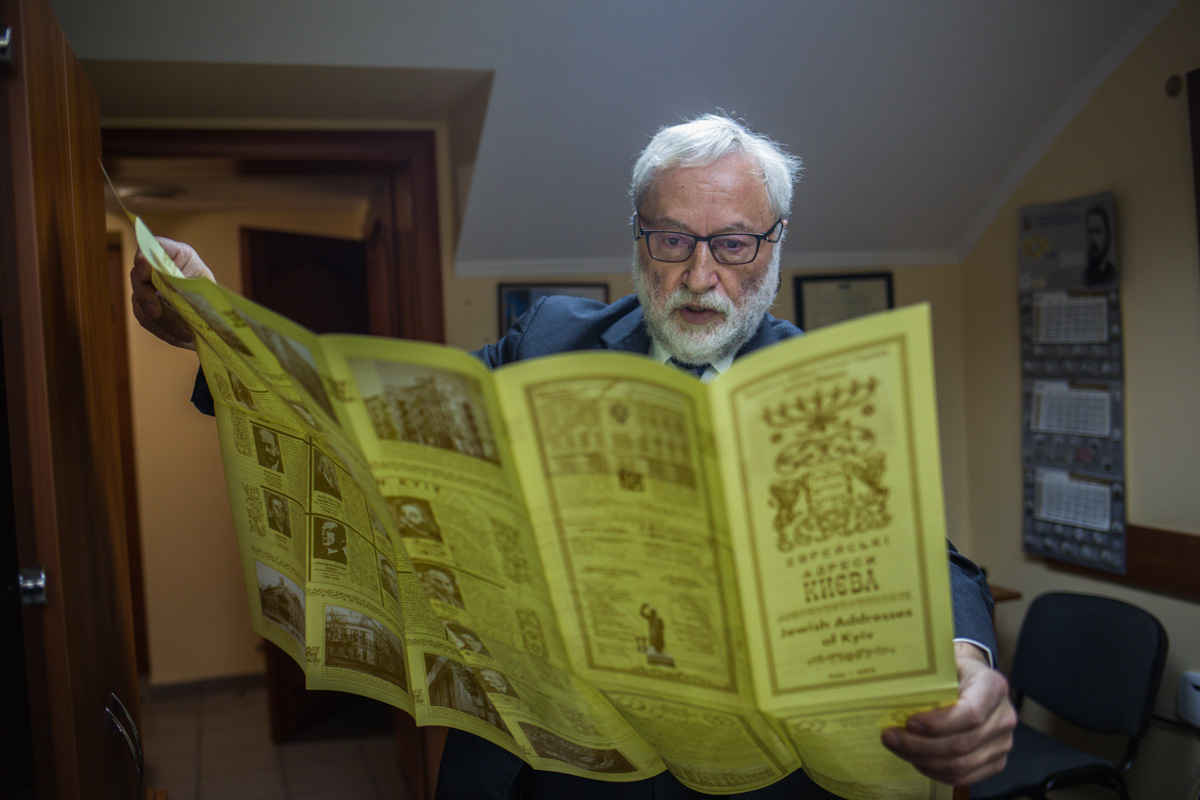
When asked if Joseph wanted to move to Israel, where his two sons live, he answered without hesitation:
I live here. It is possible to explain why you want to leave, but not why you want to stay where you live, where you are realized, where everything is yours. Why should it be explained? I will not even find such words.
Joseph speaks of forming the identity of Ukrainian Jews after the collapse of the Soviet Union:
— Jews who lived here always, in Soviet times, were Soviet Jews, that is, very assimilated, knew almost nothing about their history and culture. Then, when the Soviet Union collapsed, fortunately, they became Jews in Ukraine. But little by little their identity changes due to the fact that they live among Ukrainians. That is, among the people who seek their identity — national, religious, and state. And the Jews who live among them, like me, are also changing. And the third stage after the Soviets and Jews in Ukraine is Ukrainian Jews, that are those who identify themselves with Ukraine. This is their country. They are Jews, but they are not Ukrainians. A political nation is born in Ukraine, we are witnessing the birth of a political nation, a modern political nation. Not ethnic, but political. Ukrainians are the nucleus of this nation, but they also include representatives of different nationalities who identify themselves with Ukraine, its history, its future, its Maidans, and the transformation of our country from colonial to democratic European.
— I identify myself with Ukraine. The form of my identity is Ukrainian, but my inner side is Jewish. I will never become a real Ukrainian. And it is not necessary. But I think I have become a Ukrainian Jew.
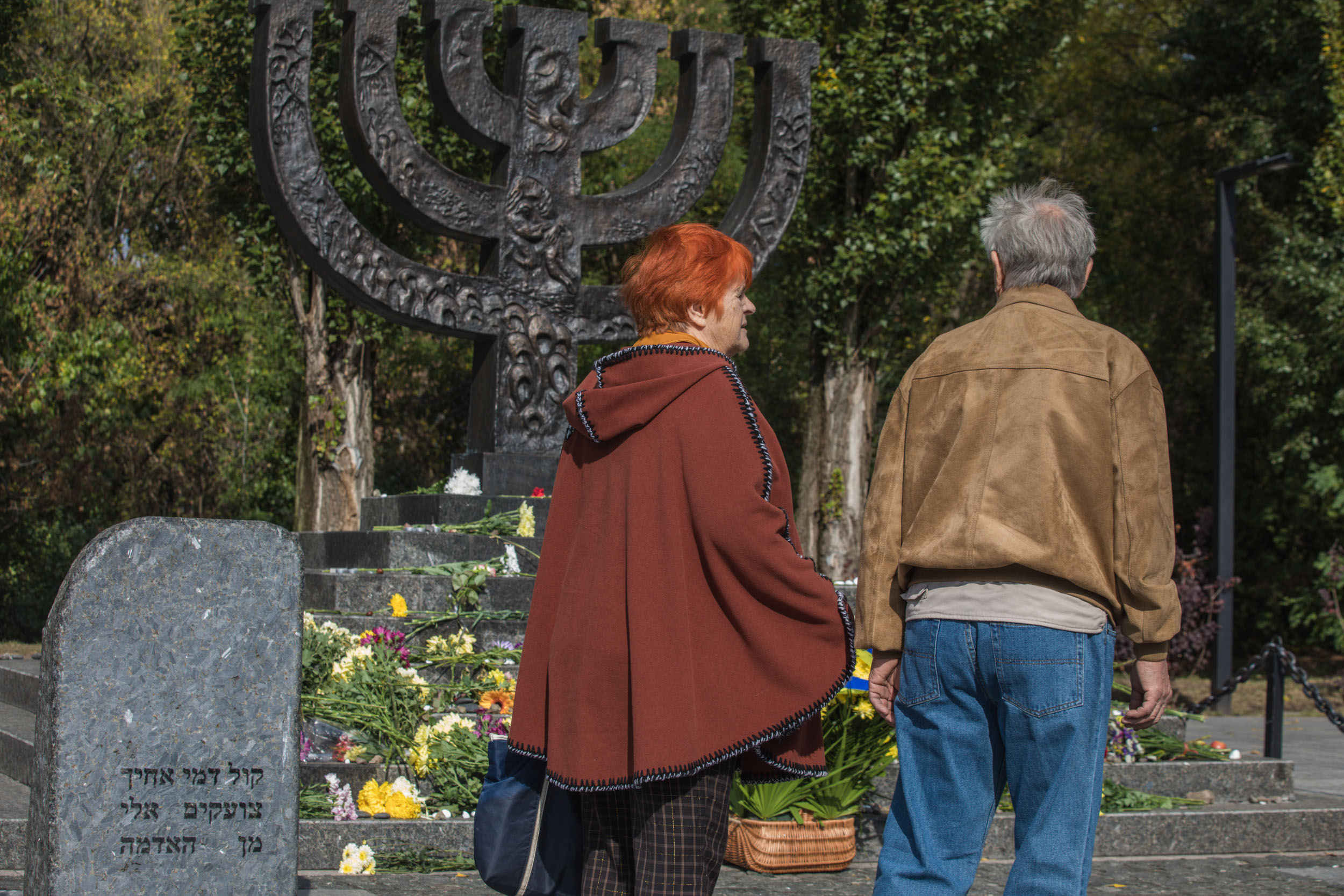
The Holocaust of bullets. Babyn Yar
The most dramatic period for Ukrainian Jewry was the Holocaust. According to various reports, between 1.5 and 1.6 million Jews were killed in concentration camps and mass shootings from 1941 to 1944. That’s about 60 percent of Ukraine’s pre-war Jewish population:
— The Holocaust is a Greek word for “fire victim”. There’s also the word “Shoah”, it’s the same. Because the Jews were burned in the furnaces. In Ukraine, the Holocaust was the Holocaust of bullets.
There is probably no Jewish family in Ukraine who is was not touched by the Holocaust tragedy. Many loved ones were killed during the mass shootings.
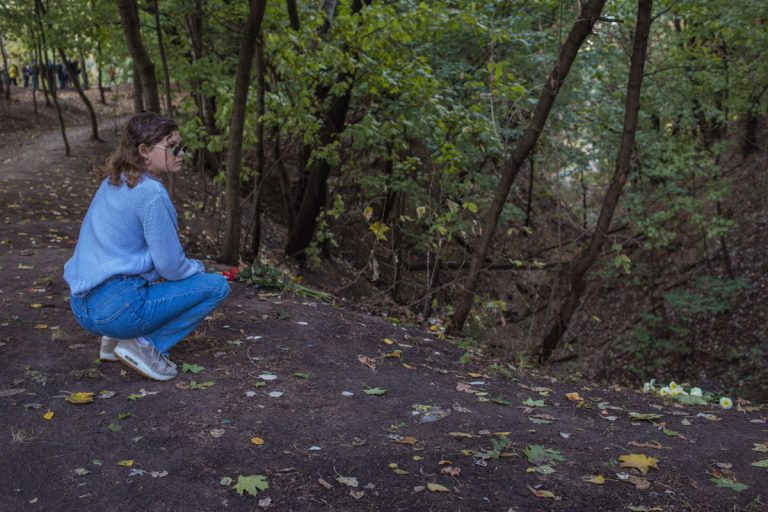
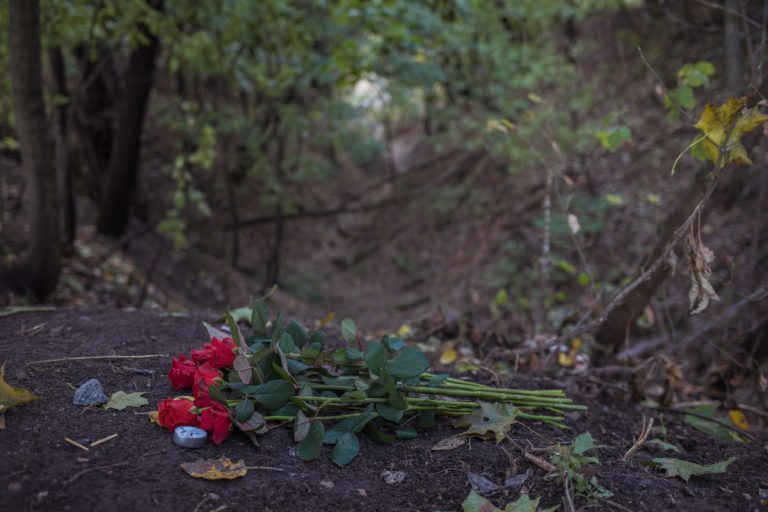
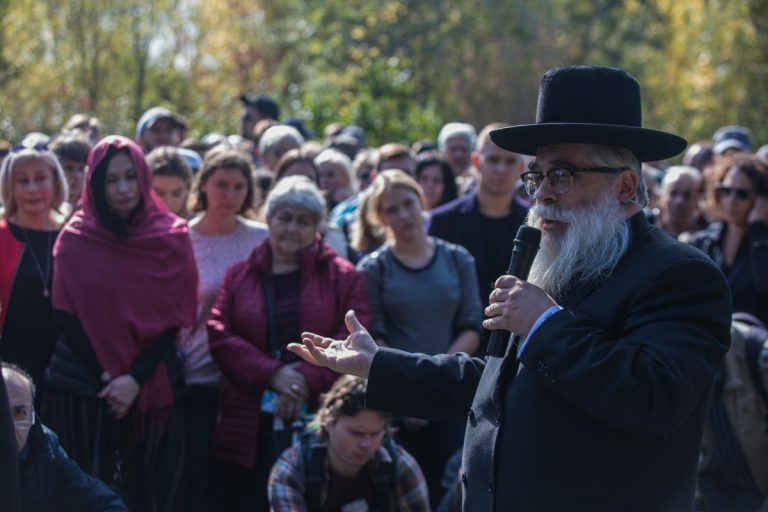
slideshow
Joseph Zisel’s tells the story of his family, who were also touched by the events of the Holocaust:
— My father’s first wife and my elder brother were killed. He was five years old in 1941. The parents were mobilized as soon as the war began and they lived in Chisinau. The parents were mobilized, and they tried to escape and died. My father didn’t know it until the age of 45. Also my mother’s father, that is my grandmother, Lyuba died in the Holocaust. My uncle, my mother’s brother, was killed at the front during the war.
The largest places of mass extermination of the Jewish population in Ukraine were: the Yaniv Concentration Camp in Lviv, Drobitsky Yar in Kharkiv, the Gendarmerie Balka in the Dnipro, and Babyn Yar in Kyiv.
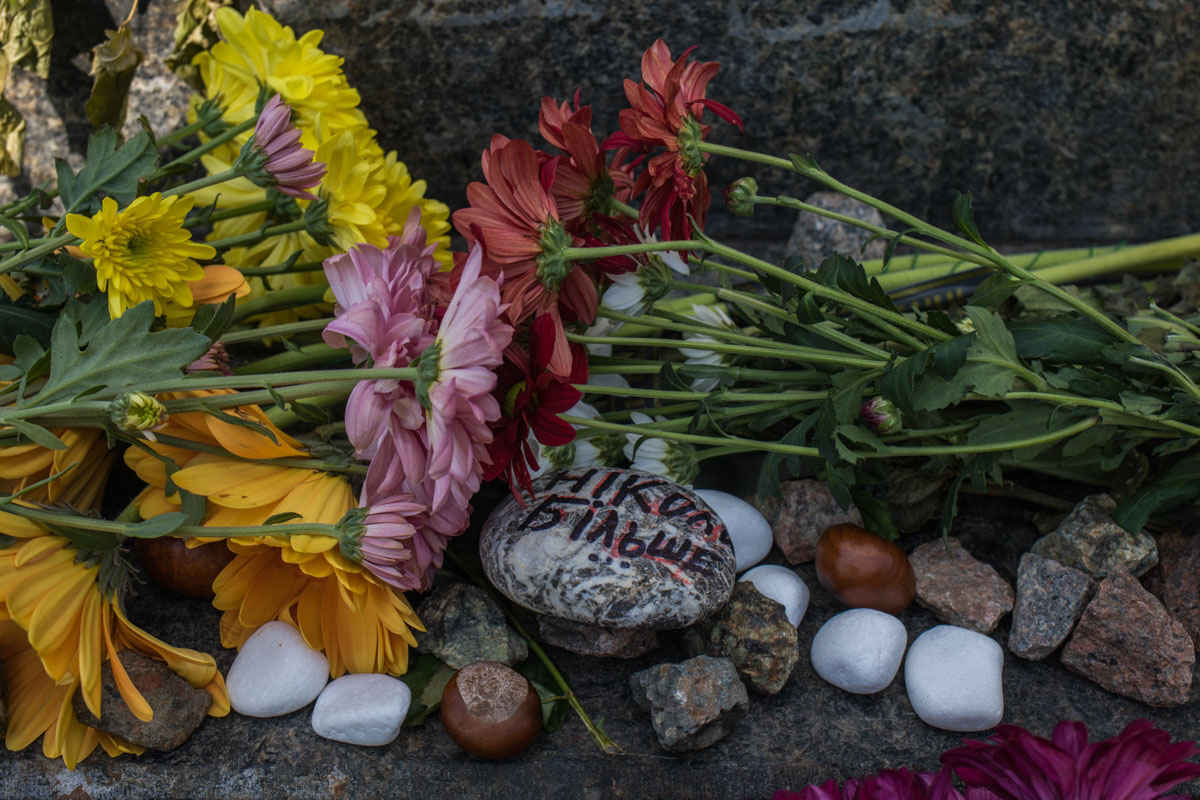
The numbers of deaths in Babyn Yar vary. In the first few days, up to 30,000 people were shot. Orthodox priests, Romas, patients of Pavlov Psychiatric Hospital, party activists, underground members, members of the OUN of UPA and others were also shot to death. Most victims were Jews.
In fact, this place was chosen not by accident, because there was a Jewish cemetery here before the war.
At the end of September, announcements were made all over Kyiv that all Jews should come to Babyn Yar with valuables and documents. Saying them as an elite nation, they will be relocated to safer places:
— On one side of these ravines the rows of Jews were built, on the other side there were German machine gunners who shot. People just fell into those ravines. They were stacked at the bottom.
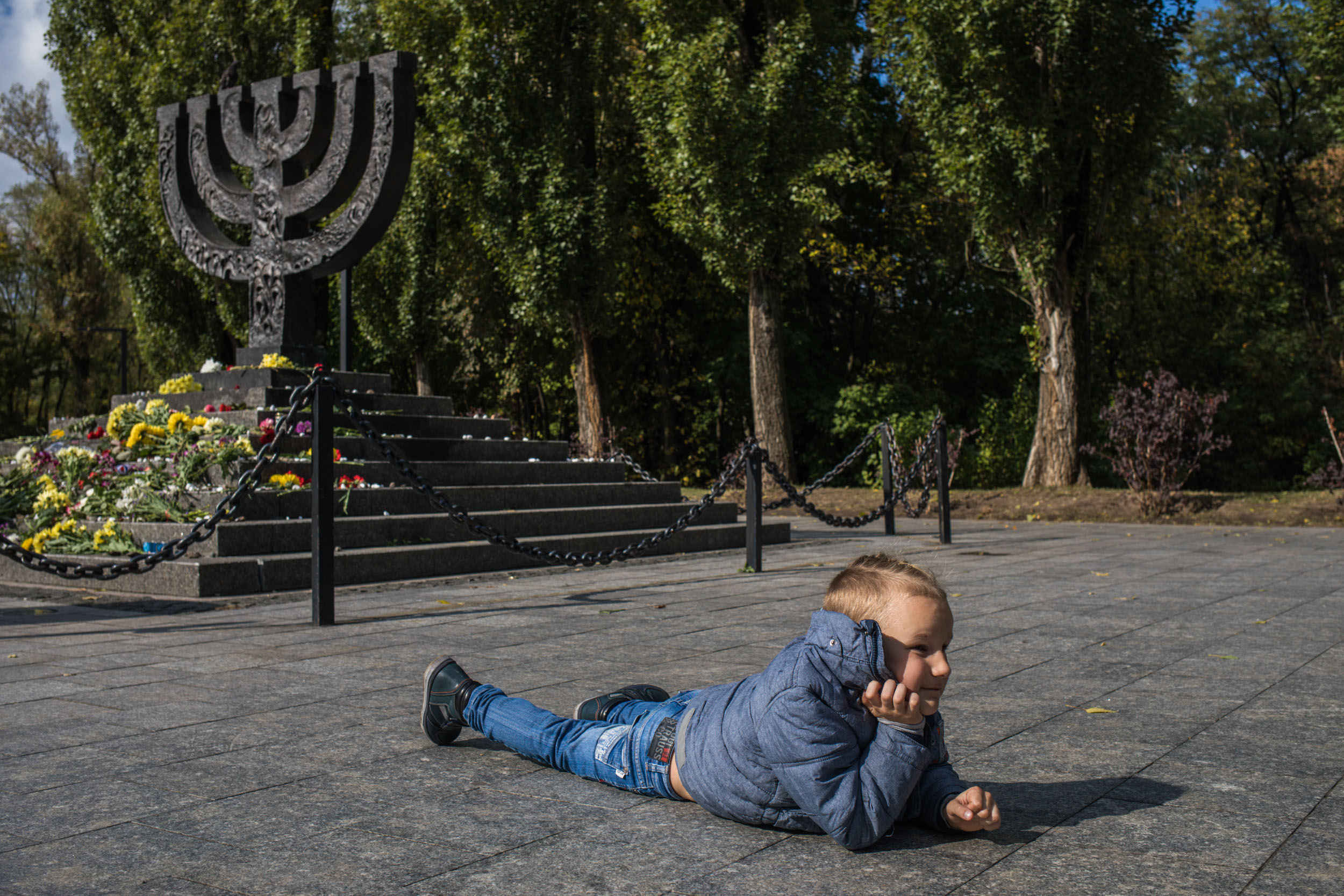
Arseniy Finberg says the Holocaust was not overlooked by his family either:
— My grandparents managed to escape. My grandfather worked at a factory that was important, and together with his factory they were evacuated far to the East. But I have relatives lying in these ravines. And almost every Ukrainian Jew has relatives left behind.
The Days of Remembrance of the Babyn Yar Victims in Ukraine are September 28-29. But the Jewish community annually commemorates the memory of those killed during Yom Kippur, because on September 29, the day before the shooting began, it was on the eve of Yom Kippur.
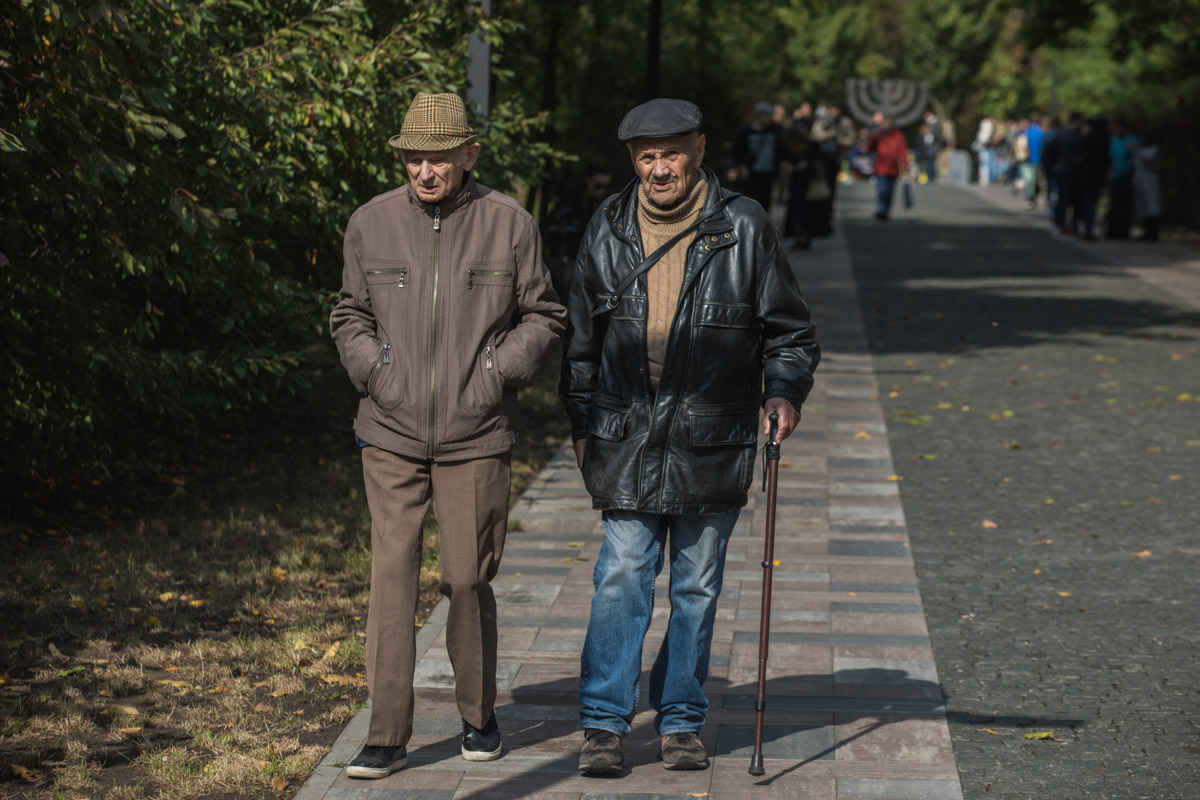
Currently, it is planned to open a memorial park of approximately 70 hectares in Babyn Yar. Joseph Zisel’s says that the concept is to make a memorial park area without construction, because according to religious tradition one cannot build on a burial ground. They want to set up a park in this area so that people can come to think, pray, and remember their relatives:
— There are two objects in the concept, but they are not located on the territory of Babyn Yar. They should be situated nearby, not touching the earth that is saturated with bones, blood and ashes. These two objects are: the Babyn Yar Victims Memorial Museum and the Holocaust Museum in Ukraine.
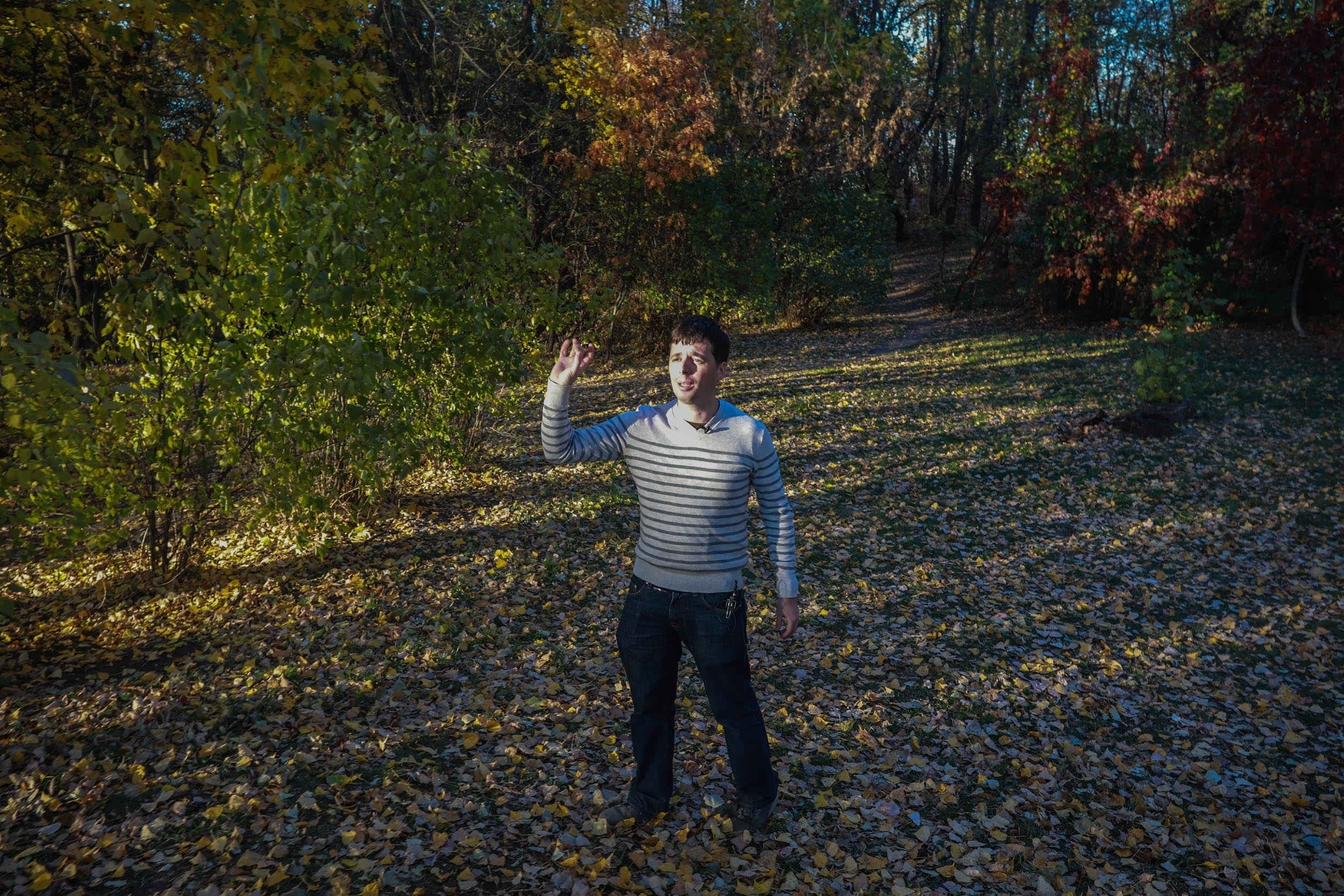
Jewish Kyiv. Arseniy Finberg
Arseniy Finberg was born and raised in Kyiv. He embodied his curiosity and love for his hometown in the excursion project “Interesting Kyiv”, which he founded in the early 2000s:
— I specialize in secret places of Kyiv. That’s how I created my project “Interesting Kyiv” by searching and finding hidden, and cool places. This is how the Secret Kyiv Walk was born, which is by far my most popular tour of my office. I always liked to look for all kinds of unusual spots.
— I grew up here, this is my city. I travel a lot, but I’m always happy to come back. This is the city where I grew up, where my children grow up, where I want my family to live.
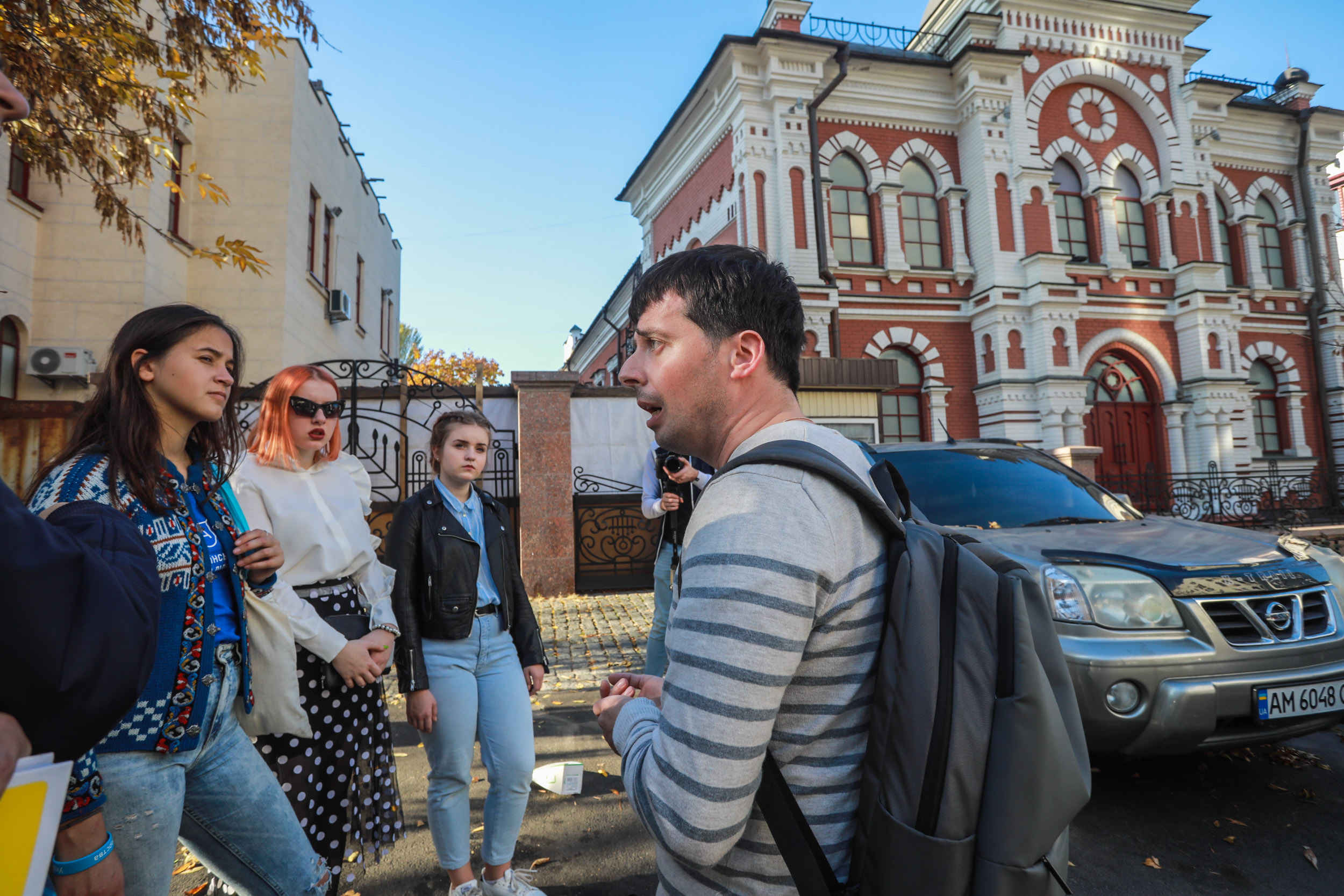
Arsenii Finberg says that in different years the percentage of the Jewish population in Podil was different, but at certain times it exceeded 20 percent of the total population of the city. Once there were 30 synagogues in Podil.
— Podil became Jewish 1000 years ago because there were Jewish gates. In old Kyiv, when it was surrounded by a wall with different gates, it was in the area of Podil where were Jewish gates.
At the time of the “strip of settlement” in Kyiv, Jews were not allowed to liv anywhere, except outside Kyiv, in the Kyiv province, because Kyiv did not belong to the “strip”.
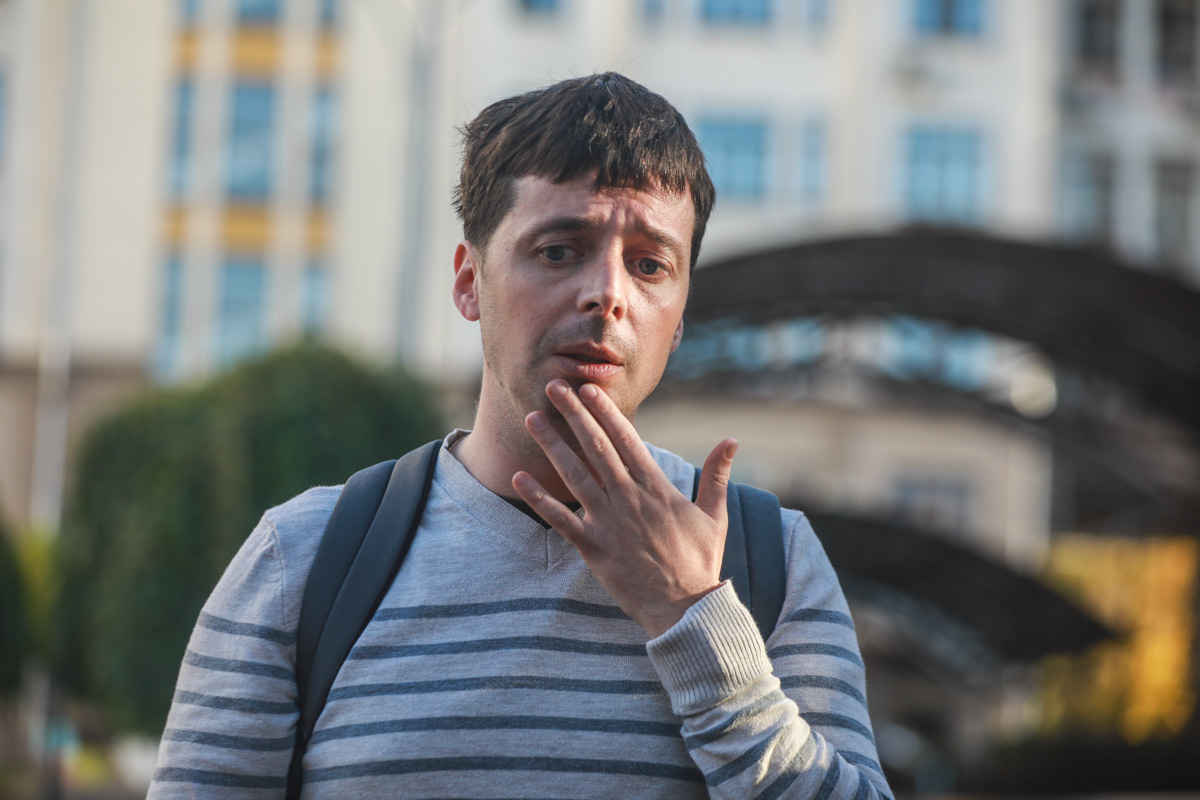
There are three synagogues in Kyiv that have been specially built or restored for religious services. This is the Kyiv Central Synagogue or the Brodsky Synagogue on Shota Rustaveli Street, the Great Choral Synagogue or the Podil Synagogue on Shchekavitska, and Halytska, situated behind the department store “Ukraine”. The oldest of these is the Great Kyiv Choral Synagogue, which had a choir and organ and which had been working in Soviet times for the longest time:
— Built in 1896 and worked until 1925. Then Soviet power came and closed all the synagogues. During World War II, there was a horse stable in this synagogue (according to other sources, there was a craft artel. — ed.). It was reconstructed only after the war, in 1945. And it was the only synagogue that had been in operation since the Second World War.
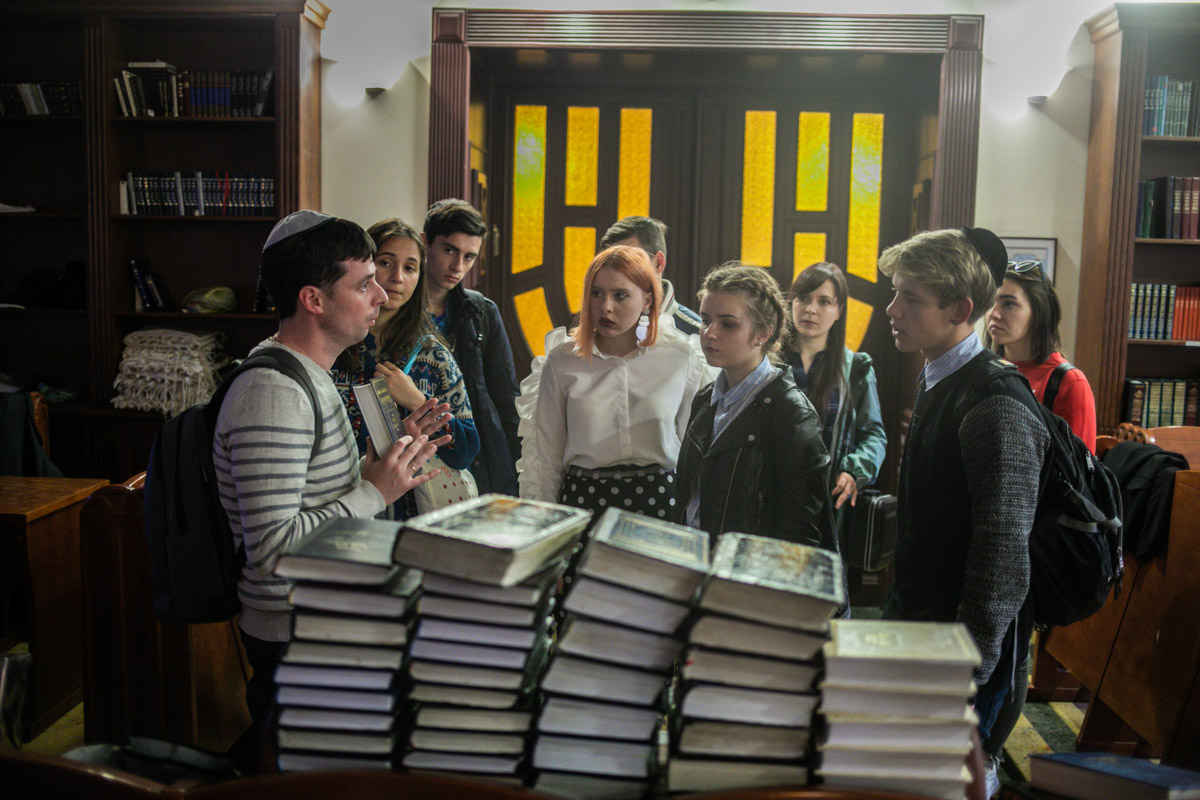
According to Arsenii, in Jewish culture, any place where 10 Jews gather for prayer can be called a synagogue.
— In addition to the three main Kyiv synagogues, there are many other buildings that have served as synagogues at different times. After the start of the war in 2014, Luhans’k and Donets’k communities also came to Kyiv. And now the Donetsk and Luhansk rabbis are renting premises in Kyiv and are serving there.
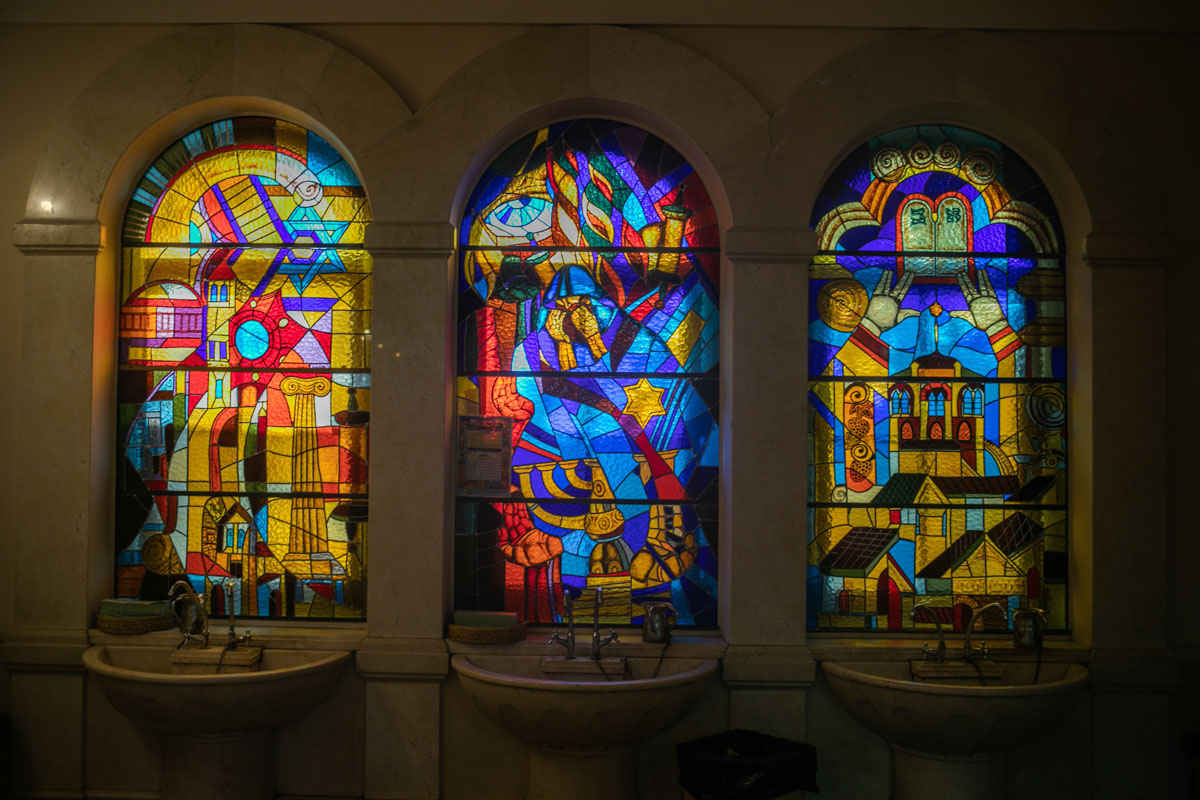
Arsenii Finberg, as a student, volunteered at the Jewish organization Helel. They traveled to small towns of Ukraine to Jewish families on traditional holidays, celebrating New Year and Easter (Paysah) together:
— They got special holiday dishes from the cabinets, which they had never used before. That is, almost all Soviet times, they did not even know what Jewish traditions were. Now, when traditions are passed on from parents to children, in Soviet families, it was the opposite. The children bring back Jewish culture and tradition to their Soviet families.

